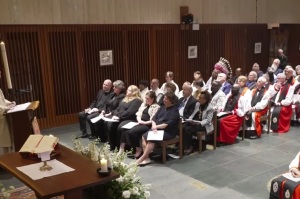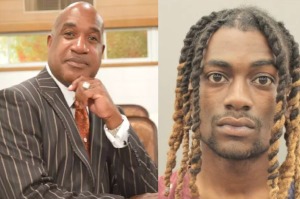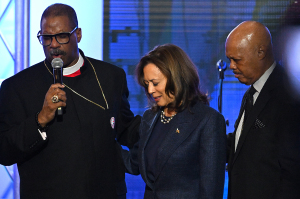Six Physical Factors That Affect Your Worship Service
Facilities and physical environment have a lot to do with what happens in a weekend worship service. The shape of your building will shape your service. Walk into some buildings and your mood will instantly brighten. Walk into other buildings and you'll feel depressed. The shape of a room can change a mood instantly; so can the temperature of room; so can the lighting in a room. Be aware of these factors and use them. Figure out what mood you want your service to project and then create it.
One of the problems we face in maintaining the church environment is that we tend to overlook defects after about four weeks. Once you become familiar with a building, you stop noticing what's wrong with it. The defects and disorder don't bother you as much as they did when you first noticed them. You become oblivious to the faded paint, the frayed carpet, the chipped pulpit, the outdated tract rack in the vestibule, the old bulletins left inside hymnals, the stack of stuff on the piano, and the burned-out light bulbs overhead.
Unfortunately, these things stand out immediately to visitors. They notice details.
One way to combat this tendency is to do an Environmental Impact Report on your church. Get a photographer to walk around your facilities and take pictures from the eyes of a visitor. Then show those pictures to your leaders and determine what needs to be changed. In particular here are some environmental factors you need to pay close attention to:
1. Lighting
Lighting has a profound effect on people's moods. Inadequate lighting dampens the spirit of a service. Shadows across a speaker's face reduce the impact of any message.
Most churches are far too dark. It may be our conditioning from all those years Christians worshiped in the catacombs! I've noticed that even churches with plenty of windows often cover them up. Somehow, churches have gotten the idea, maybe from funeral parlors, that dimming the lights creates a more "spiritual" mood. I completely disagree.
I believe that church buildings should be bright and full of light. God's character is expressed in light. 1 John 1:5 says, "God is light; in him there is no darkness at all." I believe churches should be the brightest public buildings. Light was the very first thing God created. God said, "Let there be light!" (Gen. 1:3) Today, I think God would like to say this to thousands of churches.
If you want to wake up your services, brighten up your environment. Take the curtains off your windows! Throw open the windows and doors! Turn on all the lights!
Here's an experiment: This week secretly replace all the light bulbs in your worship center with twice the watts, then notice the change in mood in next Sunday's service. You may have revival!
2. Sound
Invest in the best sound system you can afford. If you're trying to cut costs, do it in some other area. Don't skimp here. Saddleback grew for 15 years without our own building, but we've always had a state-of-the-art sound system.
It doesn't matter how persuasive the message is if people can't hear it in a pleasing manner. A tinny, fuzzy sound system can undermine the most gifted musician and incapacitate the most profound preacher. And nothing can destroy a holy moment faster than a loud blast of feedback!
If you are a pastor, insist that your church purchase a lavaliere microphone so you are not handcuffed to the pulpit. Movement while speaking maintains attention.
3. Seating
Both the comfort and the arrangement of your seating dramatically affect the mood of any service. The mind can only absorb what the seat can endure! Uncomfortable seating is a distraction that the Devil loves to use.
If you can get away replacing the pews, I'd advise it. In today's culture the only places people are forced to sit on benches are in church and the cheap bleacher section at ball games. People expect to have their own, individual chairs.
Personal space is highly valued in our society. This is why box seats are prized at stadiums. If people are forced to sit too close to each other, they get very uncomfortable. There should be at least 18 inches between people if you're using chairs and 21 inches between people if you're using pews.
If you use moveable seats, set them up so people can see some of each other's faces. It will dramatically improve how people respond to the service. If you are planting a new church always set up less chairs than you need. It's encouraging to your people when additional chairs must be brought in as people arrive. On the other hand, it's very discouraging to worship in a service when surrounded by empty chairs.
4. Temperature
As a pastor who has preached for years in un-air-conditioned gyms and unheated tents, I say this with the utmost conviction: The temperature can destroy the best planned service in a matter of minutes! When people are too hot or too cold they simply stop participating in a service. They mentally check-out and start hoping for everything to end quickly.
The most common mistake churches make regarding temperature is to allow the building to become too warm. Some usher sets the thermostat at a reasonable setting before the service without realizing that when the building is actually filled with a crowd, the body heat of all those people will raise the temperature substantially. By the time the air conditioning has cooled everything down, the service is nearly over.
Always set the thermostat several degrees cooler than what is comfortable before the service begins. Cool it down before the crowd gets there. The temperature will rise quite quickly once the service starts. Keeping the temperature on the cool side will keep the crowd awake.
5. Clean, safe nurseries
If you want to reach young families, you've got to have sanitized and safe nurseries. There should be no mop-buckets in the corners and the toys should be cleaned each week.
6. Clean restrooms
Visitors may forget your sermon but the memory of a foul smelling restroom lingers on ... and on ... and on! You can tell a lot about the morale of a church by checking out the quality of the restrooms.
The sad truth is that many churches need a completely new building. They'll never reach their community in the building they're using. One pastor told me in frustration that he was praying, "God, let the fire fall!"
When my friend, Larry Dewitt was called to pastor a church in Southern California he found a small, clap-board church building in a high-tech suburban area. Larry recognized that the age and style of the building was a barrier to reaching that community. He told the church leaders he'd accept the pastorate if they'd move out of the building and start holding services in a Hungry Tiger restaurant. The members agreed.
Today, after moving to different facilities, that church has grown to several thousand in attendance. It would have never grown that large if they'd stayed in their original building. The shoe must never tell the foot how big it can get.
For years Saddleback used high school campuses for our seeker services. In order to make the best of what we had to work with we organized two quality control crews. The first crew would come in before 6 a.m. and set up 42 different classrooms and a gymnasium. The set-up crew would diagram each classroom's layout on the chalkboard before moving anything. That way everything could be reset in the right order by the take-down crew when they came in at 1 p.m. after all the services were over. Every classroom was vacuumed twice every Sunday – once at the beginning of the day and once after we'd finished using the rooms. It was hard work but part of the price of growth.
The goal in all that we do is the same as what Paul said in Titus 2:10 "... so that in every way they will make the teaching about God our Savior attractive."
_______________________________________________
Rick Warren is the founding pastor of Saddleback Church in Lake Forest, Calif., one of America's largest and best-known churches. In addition, Rick is author of the New York Times bestseller The Purpose-Driven Life and The Purpose-Driven Church, which was named one of the 100 Christian books that changed the 20th Century. He is also founder of Pastors.com, a global Internet community for ministers. Copyright 2005 Pastors.com, Inc. Used with permission. All rights reserved.




























